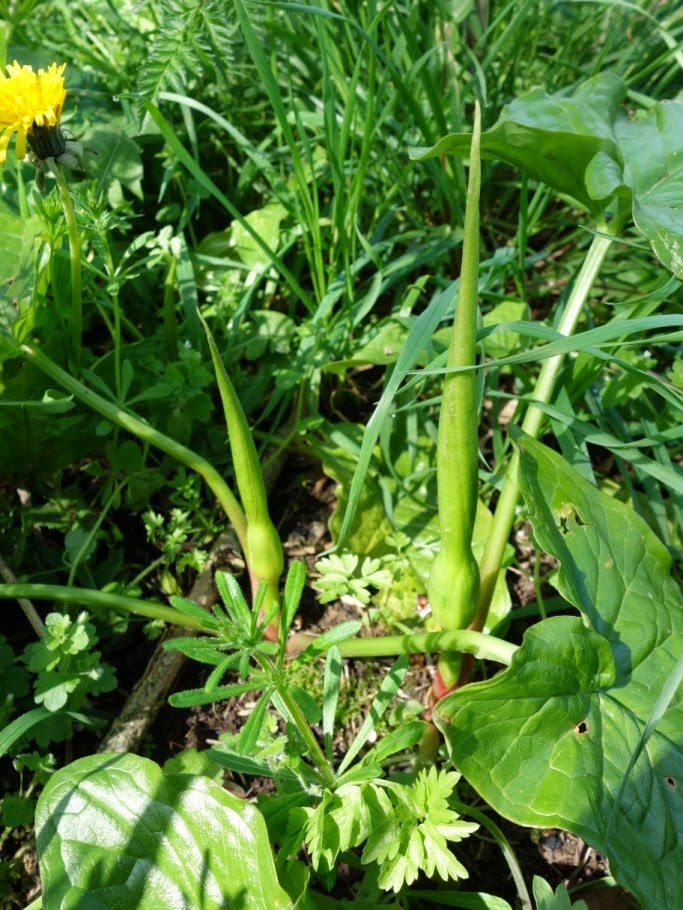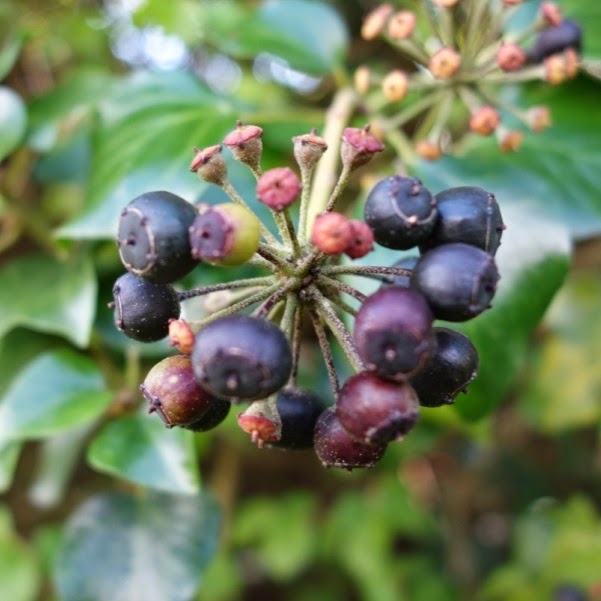Wildlife area
Parkhayes Plantation is the triangle of land lying between Parkhayes and
Lower Road, and accessible from both on foot.
The Residents Association, in consultation with the Parish Council who
owns it, is working to support and promote the Plantation as a wildlife area.
 |
| View of Plantation from Parkhayes entrance |
Historically there were a couple of farms on what is now Parkhayes (the
road), going back at least to 1605 when one Richard Ducke was listed as a free
tenant of Parkhayes (the farm). At the
same period either he, or one of his family, founded Ducke’s almshouses in
Heavitree Fore Street, at the junction with Butts Road, (since rebuilt in the
nineteenth century).
In 1704 the land passed through marriage to the Pyle family, who – typically
for an era of incredible continuity – were still farming it more than two
hundred years later in 1923! No.1
Parkhayes was built by the family in 1921 to replace the original farmhouse,
which was badly damaged by fire and left derelict until later demolished in the
1930s.
The land which is now the Plantation (sadly not in view in any of the
historic images below) seems to have been rough pasture, with a pond at the
corner nearest to Parkhayes. Old maps
show a saw pit on the opposite side of the path in the late nineteenth
century.
.jpg) |
| Parkhayes Farm before re-development [photo supplied by the late Margaret Wilson to Roger Stokes of the Woodbury History Society] |
.jpg) |
| Entrance to Parkhayes before and after re-development in 1986 (above) and 1990 (below) [photos by Sally Elliott] |
At one time there was a shop at no.1 Parkhayes, and before the modern redevelopment, the lane was therefore known locally as'Shop Lane'.
.jpg) |
| 'Shop Lane' in 1986 [photo by Sally Elliott] |
After the Parish took over this parcel of land, trees were planted in 1978 to commemorate the Queen’s Silver Jubilee, thanks to fundraising by Woodbury Salterton Women’s Institute. They include ash, birch, oak, hazel, rowan, and wild cherry, and a lime tree, planted later in 1993.
Now very well grown, some trees have recently been pruned at lower levels to allow more light to reach the woodland floor, and to encourage a wider variety of organic life to thrive there.
 |
| View within the Plantation |
Along Lower Road there are some older trees, such as this Scots Pine (below). These were planted in the 1890s by the then owner of Greendale House, in an ambitious scheme to delineate his boundary with alternating Scots pines and oaks. In general, the pines have lasted longest, and are a distinctive feature of the nearby lanes, for instance along Lower Road and at its junction with Oil Mill Lane at Heathfield Cross, and along Greendale Lane.
Projects
The Residents Association has very recently installed ten nesting boxes
(for smaller birds such as varieties of tits), three bat boxes, and an owl box (made from a recycled packing case) –
and other wildlife habitats such as a 'bug hotel' will follow. These have been funded by a donation from the Woodbury Music Hall (the
Follies), 2013. Future projects also include a notice board to draw attention to the variety of wildlife here. Many
thanks are due to local resident Dave Rose and helpers for organising this
project.
 |
| Bat boxes |
 |
| Owl box |
Badgers
This path in the Plantation is in fact a badger run. In a future post we hope to include images made by Dave Rose of badgers feeding in his neighbouring garden.
Plants and flowers
The woodland floor has a dense carpet of emerging Cow Parsley, ground
elder, nettles, brambles, goose grass, and grasses. At the edges, where there is more light,
celandines are still in full flower, as also are daisies, dead nettle, and
dandelions. Many of the plants here and
in the road verges are commonly regarded as weeds, but – quite apart from their
wild natural beauty – they are incredibly important as food for pollinating
insects as bees and butterflies.
 |
| Red Dead Nettle |
 |
| Cow parsely is one of the defining flowers of May. Coming into bloom now, it is the first of several umbellifers that grow in spring and summer. |
 |
| Celandines have been in flower for several weeks. |
 |
| Dock |
 |
| The emerging flower of Lords and Ladies. |
 |
| Elder tree coming into leaf. |
In the hedge alongside the
path from Parkhayes, hazel is coming into leaf.
There are still ivy berries here, a significant food source for birds
throughout the winter. Its flowers are
important food for bees.
 |
| Hazel |
 |
| Ivy berries |
Elsewhere in the village
Lanes and hedges
In the lanes, Greater
Stitchwort is in flower, one of
the most ubiquitous plants of country roadsides in spring.
 |
| Greater Stitchwort |
Blackthorn is in blossom everywhere
in hedges and as individual trees.
Although its blooms can easily be confused with hawthorn (which flowers
later) and other Prunus, it is
distinctive for flowering on bare black stems before the leaves form.
 |
| Blackthorn (above and below) |
Elsewhere along Village Road we also spotted white dead nettle, common field speedwell, pink
purslane, and cuckoo flower (lady’s smock).
The Village Road Plantation
In the centre of village,bluebells are showing – almost certainly a hybrid of the native and Spanish forms – and the horse chestnut buds are opening.
In the centre of village,bluebells are showing – almost certainly a hybrid of the native and Spanish forms – and the horse chestnut buds are opening.
 |
| Horse chestnut |
The Churchyard
The churchyard has been a glorious sight with its array of primroses (some tending to pink) and celandines. There are also
a few violets.
 |
| Primroses in profusion, above and below. |
 |
| Violet |
Birds and butterflies
In addition to the birds mentioned last month – robin, blackbird,
song-thrush, chaffinch, goldfinch, dunnock (hedge-sparrow), great tit, and
greater spotted woodpeckers – skylarks and chiffchaffs were first heard in the
middle of March. Skylarks used to be
considerably more widespread, and have not been heard here at all for the last
two years, so this seems to be good news.
Blackcap warblers, with their distinctive musical song, were also heard
in the middle of April. Soon after,
willow warblers and white throats were heard, and swallows and house martins
are again in our skies.
Butterflies have included the distinctive yellow brimstone, which has been
seen on warm days for several weeks now, peacocks, and the very pretty orange-tip. Both brimstones and peacocks hibernate in
buildings through the winter, emerging on warm days. Like some other butterflies, the brimstone
can be very territorial, and watching one seeing off a peacock can be quite a
sight!

.jpg)












No comments:
Post a Comment